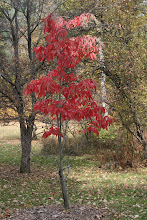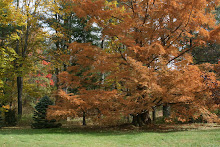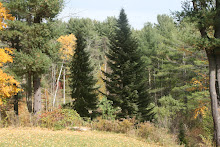SOME GOOD NEWS AND SOME BAD NEWS

Karen Engel, New York State Department of Environment Conservation Green Infrastructure Coordinator, has my name on an e-mailing list which sends me posts which are always interesting to look at. It often goes too far afield to be of use at Pine Hollow Arboretum but still is nice as it shows impressive activity through-out New York State and the Northeast. She sent some information recently that seems to fit our efforts here and reinforces what many of us tree planters have known intuitively. Research published January 2013 in the American Journal of Preventive Medicine suggests that tree loss from the spread of the emerald ash borer is associated with increased mortality related to cardiovascular and lower-respiratory-tract illness. The U.S. Forest Service study collected data in nearly 1,300 counties in 15 states over 18 years. A short article by Alliance for Community Trees summarizes the research and helps to show the implications. The findings support all our efforts to preserve and enhance the living environment. The article is titled: New Research: Trees Prove Vital to Human Health. It is good that such a large-scale study has been conducted and points to a welcome conclusion. It is bad, however, that the Emerald Ash Borer (EAB) , a beetle that kills ash trees, is a proxy for tree loss.
Researchers analyzed demographic, human mortality, and forest health between 1990 and 2007. Geoffrey Donovan, a research forester involved with the study, said “There’s a natural tendency to see our findings and conclude that, surely, the higher mortality rates are because of some confounding variable, like income or education, and not the loss of trees but we saw the same pattern repeated over and over in counties with very different demographic make-ups.” The researchers found those that lived in areas infested by the emerald ash borer and impacted by ash tree death “suffered from an additional 15,000 deaths from cardiovascular disease and 6,000 more deaths from lower respiratory disease when compared with uninfected areas. The association linking tree and human health is significant when found in such a large-scale study.
 |
| click on map to enlarge |
Bad News; Emerald Ash Borer found in Selkirk, New York
The emerald ash borer is responsible for the loss of 100 million trees in the eastern and midwestern United States since its first discovery near Detroit, in 2002. The insect threatens the entire North American Fraxinus genus. The green ash and the black ash trees are preferred. White ash is also killed rapidly, but usually only after green and black ash trees are eliminated. EAB has an eleven year life cycle and most infected trees die two to four years after being infected. Where this happens there are landscapes of dead ash trees because the trees all die at the same time. Dealing with the infested dead branches and trunk wood is a problem all in itself. The New York State Department of Environmental Conservation announced in 2009 that the emerald ash borer was recently discovered for the first time within the borders of New York State, in the Cattaraugus County town of Randolph. In October 2011 the emerald ash borer was found in Selkirk, Albany County only approximately ten to fifteen miles distant from Pine Hollow Arboretum. Currently we had no signs of EAB infestation at Pine Hollow Arboretum.
 |
| Emerald Ash Borer |
There are hundreds of ash trees at Pine Hollow “if you count the small ones”, Arboretum founder and tree planter John Abbuhl said. They are predominately Northern White Ash ( Fraxinus Americana) and Green Ash (Franxinus pennsylvanica) which prefers wetter areas. Where ever there is a clear untended area at the Arboretum seedling ash trees will appear. The largest Northern White Ash at Pine Hollow Arboretum has a three foot through trunk at its base and is found in the western corner of the arboretum at the far end of the Magnolia Field. The largest Green Ash is two foot through and is found just west of the All Purpose Swamp. The ash is related to the olive tree. John Abbuhl said that in an evolutionary sense it is one of the more of recent species. The Mountain Ash is not an ash. It is named Mountain Ash because its leaves look like ash leaves.
The colorful Asian beetle that causes so much destruction is an unwelcome visitor. One that we are on the look-out for.















No comments:
Post a Comment